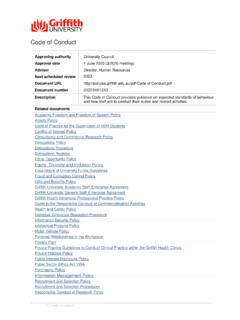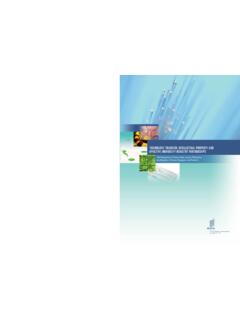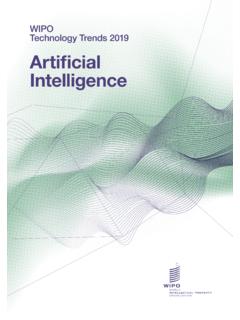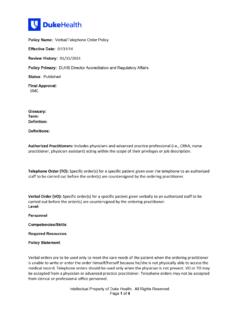Transcription of Intellectual Property Rights A general Introduction
1 Course : PGDIPR-01. Vardhaman Mahaveer Open University, Kota Intellectual Property Rights A general Introduction 1. Course Development Committee PGDIPR-01. Chairman Prof. L. R. Gurjar Director (Academic). Vardhaman Mahaveer Open University, Kota Convener and Members Convener Dr. Yogesh Sharma, Asso. Professor Prof. Nanadwana Department of Law Director, SOCE. Vardhaman Mahaveer Open University, Kota Vardhaman Mahaveer Open University, Kota External Members: 1. Prof. Satish C. Shastri 2. Prof. Sharma Dean, Faculty of law, MITS, Laxmangarh Law Sikar, and Ex. Dean, University, Jodhpur University of Rajasthan, Jaipur (Raj.). 3. Dr. Pitaliya 4. Prof. (Dr.) Shefali Yadav Ex. Dean, MDS University, Ajmer Professor & Dean - Law Principal, Govt. , Chittorgarh (Raj.) Dr. Shakuntala Misra National Rehabilitation University, Lucknow 5. Dr Yogendra Srivastava, Asso.
2 Prof. School of Law, Jagran Lakecity University, Bhopal Editing and Course Writing Editor: Course Writer: Dr. Yogesh Sharma Prof. ( Dr.) Shefali Yadav, Professor & Dean Law, Convener, Department of Law Dr. Shakuntala Misra National Rehabilitation Vardhaman Mahaveer Open University, Kota University, Lucknow Academic and Administrative Management Prof. Vinay Kumar Pathak Prof. Gurjar Vice-Chancellor Director (Academic). Vardhaman Mahaveer Open University, Kota Vardhaman Mahaveer Open University, Kota Prof. Karan Singh Prof. Nanadwana Director (MP&D) Director, SOCE. Vardhaman Mahaveer Open University, Kota Vardhaman Mahaveer Open University, Kota Course Material Production Prof. Karan Singh Director (MP&D). Vardhaman Mahaveer Open University, Kota Production 2015 ISBN-978-81-8496-581-0. All right reserved no part of this book may be reproduced in any form by mimeograph or any other means, without permission in writing from the Open University, Kota.
3 Printed and published on behalf of Open University, Kota by Director (Academic). Printed by . 2. Vardhaman Mahaveer Open University, Kota Intellectual Property Rights - A general Introduction Unit No. Unit Name Page No. Unit-1 Concept, Nature and Scope of IPR 4. Unit-2 Origin and Genesis of IPR 21. Unit-3 Theories of IPR and its Jurisprudential Aspects 42. Unit-4 Concept of Property and IPR as one of aspect 64. Unit-5 Ethical, Moral and Human Rights aspects of IPR 81. Unit-6 IPR and Development 107. Unit-7 IPR the Need of Protection at International and National Level 130. Unit-8 IPR and Legal Regime in India 158. Unit-9 IPR and Global Legal Regime 191. Unit-10 Objectives of the Protection of IPR's 214. Unit-11 Commercialization of IPR 228. Unit-12 Financial Values Trade in IPR 248. Unit-13 WIPO and Role of IPR in World Trade 268.
4 Unit-14 The Relation of WIPO and WTO 286. Unit-15 IPR-Relating to Disputes Settlement-Global Aspects of Globally 309. Unit-16 IPR-Relating to Disputes Settlement-National Aspects or Nationally 333. Unit-17 IPR Transactions, Licensing, Financial Values of IPR. and Payment Negotiations relating to IPR 356-378. 3. Unit 1. Intellectual Property Rights (Concept, Nature and Scope). Objectives: After going through this unit, you should be able to understand the concept, nature and scope of Intellectual Property Rights which will give a comprehensive understanding of Intellectual Property Rights . Structure: Introduction The Concept of Intellectual Property Historical Basis Conceptual Basis Scope of Intellectual Property Rights Patents Copyright Industrial Design Law Trademarks Rights Law Geographic Indication Trade Secrets Nature of Intellectual Property The Nature of Protectable Rights general Prospects of Intellectual Property Protection Summary Self-Assessment Test Further Readings Introduction : Property is very complex concept to understand.
5 It can be divided into many ways: Movable-Immovable, Tangible-Non Tangible etc. The division of Property as movable and immovable, if it is tangible, was known in Roman law and has been adopted by modern Civil Codes. However, as a result of the 4. industrial revolution and the rapid development made in the fields of science, technology and culture, new kinds of Property came into existence . New Rights and properties like patents, copyright and industrial designs, which came to be known as Intellectual Property Rights (IPRs) received attention due to their unique characteristics. Intellectual Property is so broad that it has many aspects. It stands for groupings of Rights which individually constitute distinct Rights . However, its conception differs from time and it to time. It is subject to various influences. The change in information technology, market reality (globalization) and generality have affected the contents of Intellectual Property .
6 For instance, in olden days because of religion creation of life, say plants or animals were not protected. Thus, defining IP is difficult as its conception changes. It is diverse, challenging and has application in own day today life. IP is a section of law which protects creations of the mind, and deals with Intellectual creations. Is it a workable definition? It is also commonly said that one cannot patent or copyright ideas. Intellectual Property , as a concept, was originally designed to cover ownership of literary and artistic works, inventions (patents) and trademarks . What is protected in Intellectual Property is the form of the work, the invention, the relationship between a symbol and a business. However, the concept of Intellectual Property now covers patents, trademarks, literary and artistic works, designs and models, trade names, neighboring Rights , plant production Rights , topographies of semi conductor products, databases, when protected by a sui generis right, unfair competition, geographical indications, trade secrets, etc.
7 Those types of Intellectual Property have been characterized as pieces of information which can be incorporated in tangible objects at the same time in an unlimited number of copies at different time and at different locations anywhere in the world . In other words, Intellectual Property Rights are intangible in nature, different from the objects they are embodied in. The Property right is not in those copies but in the information which creates in them. In today's world, the international dimension of Intellectual Property is of ever increasing importance for three compelling reasons. First, the composition of world trade is changing. Currently, commerce in Intellectual Property has become an even greater component of trade between nations. The value of information 5. products has been enhanced greatly by the new technologies of the semiconductor chip, computer software and biotechnology.
8 Second, the world commerce has become even more interdependent, establishing a need for international cooperation. No longer can a single country impose its economic will on the rest of the world. Accordingly, countries have recognized this interdependence and have called for a broadening of international agreements/arrangements involving Intellectual Property . Third, new reprographic and information storage technologies permit unauthorized copying to take place faster and more efficiently than ever, undermining the creator's work. There is a general feeling in the developed countries that much of this sort of copying takes place in the third world due to the relaxation of legal standards. All these factors have prompted the international community as a whole to accord due recognition to Intellectual Property and Intellectual Property regime.
9 Thus, the above reasons widen the scope of Intellectual Property Rights . Among the bundles of Intellectual Property Rights , copyright that deals with the protection of literary, artistic and scientific works is one. The Concept of Intellectual Property Intellectual Property , very broadly, means the legal Property which results from Intellectual activity in the industrial, scientific and artistic fields. Countries have laws to protect Intellectual Property for two main reasons. One is to give statutory expression to the moral and economic Rights of creators in their creations and such Rights of the public in access to those creations. The second is to promote, as a deliberate act of government policy, creativity and the dissemination and application of its results and to encourage fair trading which would contribute to economic and social development.
10 Generally speaking, IP law aims at safeguarding creators and other producers of Intellectual goods and services by granting them certain time limited Rights to control the use made of those productions. These Rights do not apply to the physical object in which the creation may be embodied but instead to the Intellectual creation as such. IP is traditionally divided into two branches: industrial Property and copyright . The convention establishing the World Intellectual Property Organization (WIPO) concluded in Stockholm on July 14, 6. 1967 Art. 2(viii) provides that Intellectual Property shall include Rights relating to: 1) literary, artistic and scientific works: 2) performances of performing artists, phonograms and broadcasts . 3) inventions in all fields of human behavior . 4) scientific discoveries . 5) industrial designs . 6) trademarks, service marks, and commercial names and designations.













